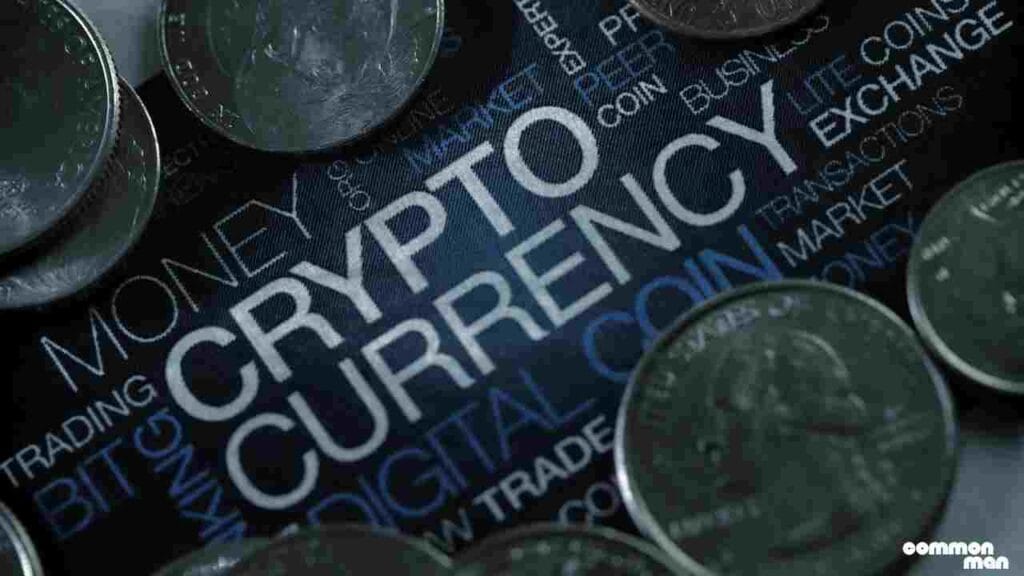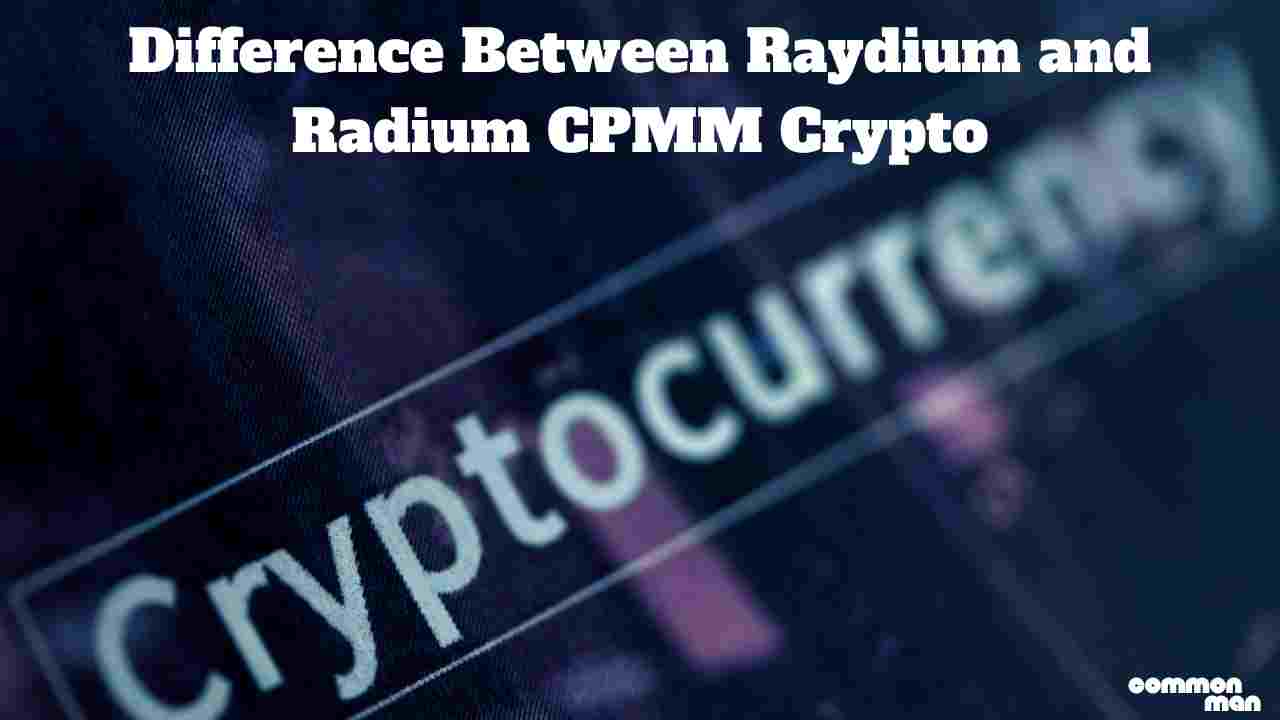Cryptocurrency is a dynamic field that is constantly evolving. It includes a wide range of tokens, coins, and platforms. Each one offers distinct features and functions. It can be hard for both newcomers and seasoned followers to distinguish between the different types of cryptocurrency. The differences between Radium CPMM and Radium crypto are often confusing. Let’s look at what they are and how different they are.
Key Takeaways
- Radium is an electronic currency that runs on the Solana Blockchain. It supports trading, staking, and reward generation.
- Radium CPMM is a Constant Product market maker that manages pricing and liquidity for decentralized exchanges.
- Radium Crypto is available on many major exchanges, including Binance, FTX, and Binance, allowing for a wide range of accessibility.
- Radium CPMM and Radium are fundamentally different. Radium is a transactional token, whereas CPMM is a tool for managing pricing and liquidity.
- Radium allows users to stake tokens in exchange for extra rewards. This increases the earning potential on the platform.
What is Radium?
Radium crypto is a central part of the Solana decentralized finance ecosystem, serving as an automated market maker platform. Radium Crypto offers a range of services. DeFi services are designed to simplify cryptocurrency trade, increase liquidity, and provide yield-generating options. Its primary functions are to allow users to exchange digital assets, contribute to liquidity pools, and participate in governance decisions that shape the future. Radium crypto, as an AMM, eliminates traditional order books through the use of smart contracts that manage liquidity pools. These pools are made up of pairs of tokens and allow users to trade using liquidity provided by other users. This ensures liquidity is available to trade, even for token pairs that are less popular, reducing trading barriers.
Radium’s role on the Solana blockchain
Radium’s identity and functionality are dependent on its integration into the Solana Blockchain. Radium can execute transactions at low costs and almost instantly, thanks to Solana’s ability to process many transactions quickly. Radium’s collaboration with Solana is a great way to tackle a key challenge for the DeFi industry: scaling. Radium can handle thousands of transactions every second by leveraging Solana’s strength. This is much cheaper than Ethereum-based exchanges. This improves user experience and allows for more frequent trading, as well as sophisticated DeFi strategies that were previously not possible due to slow speeds and high costs on other blockchains.
Radium Features
Radium has a variety of features that can be tailored to the needs of DeFi users:
- Token Exchange: Radium’s easy-to-use user interface allows users to exchange tokens with ease. The platform offers a variety of trading options for users, as it supports tokens from Solana’s ecosystem.
- Liquidity provisioning: Users can become liquidity providers if they add pairs of tokens into Radium’s pools. The pool earns a portion of the trading fee collected. This is a passive income source.
- Yield farming: Radium offers users the opportunity to earn extra rewards by staking their liquidity provider tokens. These tokens are typically the native token of the platform.
- Governance: Radium token holders can vote on proposals to participate in the governance of the protocol. These proposals can range from changes to fee structures to new platform features.
- Cross Chain Bridging: Radium has implemented bridge solutions that enable users to transfer assets from Solana to other Blockchain platforms. This improves the platform’s functionality and accessibility.
What is Radium CPMM?
Radium CPMM (constant product market maker) is a version of the Radium ecosystem’s automated market maker. The CPMM model is based on a mathematical formula that maintains a constant ratio between the two assets within a liquidity pool. This market-making approach has become popular in the DeFi sector due to its simplicity, efficiency, and ability to provide liquid in different market conditions. The CPMM model is based on the formula xxy=kx times y= kxxy=k where xxx, you are the quantities of two assets in the pool, and K represents a fixed value. This formula ensures the purchase of one asset in the pool will increase the price of another, balancing the supply and demand. The constant product rule provides continuous liquidity. This means that trades can be made at any time. Prices may change depending on the trading volume or the condition of the pool.
Features Unique to Radium CPMM Crypto
Radium CPMM is unique in that it has several features that make it stand out from the rest of the Automated Market Makers (AMMs) available.
- Consistent liquidity: CPMM ensures that there is always liquidity available for trading regardless of market fluctuations or transaction sizes.
- Dynamic Pricing: The CPMM adjusts prices based on supply and demand as transactions are made. This ensures efficient price setting without the use of external price feeds.
- Slippage Prevention: This model protects you against price manipulation by making large trades more costly.
- User Accessibility: This is designed to be easy for users to use and understand.
- Integration capabilities: Due to its simplicity, the CPMM can be easily integrated with other DeFi protocols. This will enhance collaboration within the ecosystem.
Radium CPMM Crypto
Radium’s use of the CPMM offers a number of benefits to users and the broader DeFi Community.
- Predictable Prices: Users can accurately predict trading results using the mathematical structure of this model, which allows them to make better-informed choices.
- Reduced Impermanent Loss: Although it can’t eliminate all impermanent losses, the CPMM system helps to reduce this risk for liquidators compared to other AMM systems.
- Enhanced capital efficiency: Radium CPMM focuses on liquids near the current market prices, improving the effectiveness of capital used by liquidity providers.
- Arbitrage Opportunities The model creates arbitrage opportunities, which help keep prices consistent on different exchanges and markets.
- Flexibility The CPMM Model is easily adaptable for various token pairs and pools, providing a wide range of trading options.

What is the main difference between Radium and Radium Crypto?
Understanding the differences between Radium CPMM Crypto and Radium reveals the roles they play in the cryptocurrency industry. We can identify their differences after reviewing what they each include.
Function and Purpose
- Radium is a digital currency that can be traded, staked, or used for various DeFi applications.
- Radium CPMM, on the other hand, is not a currency. It’s a tool that improves trading efficiency within the Radium platform.
Use
- Radium is a token that can be used for trading, stakes, and rewards. Radium owners can influence key decisions and participate in the governance of the platform.
- Radium CPMM is in the background. It balances supply and demand to set Radium token prices.
Accessibility
- Radium tokens can be purchased on many exchanges. Radium tokens are widely available and compatible with many wallets.
- Radium CPMM is essential to the operation of the platform, but it does not interact directly with its users. It is automatically activated by the system.
Complexity
- Radium’s interaction is simple. Radium is a cryptocurrency that you can buy, trade, and stake.
- Radium CPMM is more complex than decentralized exchanges. This is a very complex part of Radium.
Function in the Ecosystem
- Radium improves the DeFi ecosystem by enabling trading opportunities and income generation.
- Radium CPMM manages the entire trading process to ensure smooth transactions on Radium.
Why Both Are Important
Radium CPMM and Radium crypto are both essential for the smooth operation of the Radium platform. Radium is the main token that powers the platform. Radium CPMM makes sure trading is fair. Radium users can fully benefit from the platform by understanding both components.
How to Use Radium
Radium is easy to use. The steps are below.
- Get A Wallet: To begin, you will need to secure a wallet that can support Solana tokens.
- Purchase Radium: Purchase Radium from popular exchanges such as Binance or FTX.
- Trade and Stake: Once you have Radium, you can either trade it for tokens of other currencies or stake it in order to receive rewards.
- Participate in Governance: Holding enough Radium will allow you to vote for decisions that affect the platform.
Common Mistakes In Radium Trading
Radium traders should be aware that there are common mistakes they can make which could negatively impact their trading. A common mistake is not doing enough research before trading. Failure to evaluate market trends or investigate assets can lead to rash and expensive decisions. Another oversight is to ignore the possibility of temporary loss when providing liquidity. Traders must weigh the risks associated with market fluctuations and only invest what they are willing to lose. Establishing plans to exit investments can help reduce the impact of market declines.
Misunderstanding CPMM Mechanics
Traders who do not fully understand CPMM can make poor trading decisions. Traders should familiarize themselves with the constant product formula and understand how their trades affect liquidity pools. The effects of large transactions can have a significant impact on price, which will reduce profits. Understanding the role of Radium CPMM fees is also crucial. When evaluating profitability, traders should take transaction costs into account. This is especially true for smaller trades that may not be able to cover the associated fees.
Practical Uses for Radium and Radium CPMM
Real World Applications
Radium and Radium CPMM’s functionality extends beyond the theory to real-life applications, which highlight their benefits. Users can take part in various activities, such as trading tokens, providing liquidity, and earning rewards, which enhances the DeFi environment. Radium’s primary application is yield farming. Users deposit their assets in liquidity pools and receive rewards. This feature attracts individuals who are looking for passive income and increases liquidity. Developers can use Radium’s platform to create customized DeFi products. This will enrich the ecosystem. Radium CPMM is primarily used for automated exchanges. It enables users to trade easily, using mathematical rules that ensure pricing and liquidity. This reduces barriers and improves the trading experience of a wider audience.
Case Studies of Effective Trading
Radium and Radium CPMM are used effectively in many real-life situations. These examples show how users can achieve positive outcomes. A trader, for example, might see a token that is popular on Radium and invest based on its trends. Radium CPMM allows them to quickly execute trades while keeping a close eye on price fluctuations and slippage. The CPMM model can be used to make substantial profits if the trader is able to time the market correctly. This shows the adaptability of this model. Radium pools have also seen positive results from liquidity providers contributing tokens, resulting in passive income from fees. Effective risk management strategies allow those who make informed decisions to succeed in volatile markets.
Community Insights & Feedback
Radium CPMM and Radium are evolving thanks to the community. User feedback is used to guide future updates and can influence aspects such as platform usability or new features. Users can express themselves and work together on new ideas through forums, social media, and governance systems. This interaction fosters a community-based approach and a commitment to the ecosystem, both of which are essential for its sustainability. Radium and Radium CPMM are able to tailor their services to meet the needs of users by keeping track of community feedback. This ensures that they remain relevant within an ever-evolving DeFi industry.
Conclusion
Anyone planning to use Radium’s platform must understand the differences between Radium and Radium-CPMM. Radium is the token that’s used for trading, staking, and other activities. Radium CPMM acts as the mechanism to enable trading on the Radium platform. Together, they make sure that the Radium ecosystem is running smoothly and offers users a seamless user experience.
Frequently Asked Questions
What Is Radium Crypto?
Radium is an electronic token designed to facilitate trading, stakes, and rewards. It is built on the Solana Blockchain.
What is CPMM?
CPMM is an acronym for Constant Product Market Maker. It’s a pricing formula used by decentralized trading platforms to determine token prices.
Can Radium Crypto be traded on different exchanges
Radium can be purchased on Binance, FTX, and other prominent exchanges.
What’s the difference between Radium CPMM and Radium?
Radium is a cryptocurrency that is primarily used for trading and staking. Radium CPMM, on the other hand, is an algorithm that helps to determine token prices and manage liquidity in the Radium ecosystem. Radium is an asset, and CPMM supports trading.









